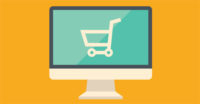Overcoming the Hurdles of E-Commerce
Current online displays of consumer packaged goods don’t show products in their best light. Here are some ideas that could help.


Visuals can be misleading in terms of price/value relationships, as a package that appears larger or costs more may not always contain more product.

Eye-tracking studies on both desktops and mobile devices show that e-commerce shoppers focus almost entirely on the top third of the page.

In an e-commerce scenario, larger brands lose their ability to “billboard” and visually pre-empt smaller competitors. As a result, smaller brands often generate much higher market share online.

In an e-commerce scenario, larger brands lose their ability to “billboard” and visually pre-empt smaller competitors. As a result, smaller brands often generate much higher market share online.





The explosive growth of online shopping has revolutionized the world of retailing. Clearly, this trend will only continue, creating some uncomfortable disruptions along with tremendous opportunities for retailers, manufacturers and consumers. In fact, paradigm-shifting acquisitions —including Walmart’s purchase of Jet.com and Amazon’s acquisition of Whole Foods—suggest that major players see the potential and will invest heavily to succeed.
However, while e-commerce has thrived in many areas (travels, technology, apparel, etc.), online purchases of consumer packaged goods (CPG products) have remained limited. In the U.S., recent e-commerce sales were approximately $10 billion, which is only 2 percent of all CPG sales. This article explores why the shopping experience itself is actually a barrier to adoption and will share examples of how this barrier can be overcome through improved packaging and e-commerce interfaces.
a difficult shopping process
Clearly, there are many factors limiting e-commerce growth for consumer goods, including concerns about purchasing perishables online (meats, produce, etc.), which drive shoppers to physical stores. But in studies at PRS IN VIVO, we’ve discovered a more surprising barrier: the e-commerce shopping interface.
In many cases, package goods are displayed much like other products, in a tiled approach that encourages clicking to an individual product page to examine details. While this approach is well suited to books, electronics and other information-intensive products that shoppers want to examine closely, it doesn’t work very well for most CPG products. That’s because when people buy groceries and other low-engagement items, they are making much faster decisions based on familiar patterns, shapes, colors, symbols—and quick comparisons of products.
The online purchase environment at Amazon, Jet.com and elsewhere disrupts this natural, largely sub-conscious navigation process. This limits shoppers’ ability to quickly deselect among the many available options. Instead, it requires several clicks to make direct comparisons between similar products as opposed to immediately seeing them side-by-side in a physical store.
In addition, given the small size of the package thumbnails, shoppers often mistakenly select (and occasionally even purchase) the wrong variant of their favorite brand, such as whole bean instead of ground coffee. Furthermore, it is sometimes difficult to understand the proper price/quantity relationship. Often, visuals can be misleading, as a package that appears larger or costs more may not always contain more product.
Overall, this adds up to a more challenging shopping experience than in a familiar brick-and-mortar store. And while some shoppers do invest in work-arounds via favorite lists, automatic replenishment, etc., others are simply choosing instead to default to the relative ease and familiarity of a physical store.
Unintended Consequences
In addition to dissuading some CPG shoppers from e-commerce, the digital shopping interface directly impacts purchase patterns in some unintended ways. Through our eye-tracking studies, in which we see how shoppers navigate when shopping online, it was observed that:
- When using a desktop computer, shoppers focus almost entirely on the top third of the page;
- On mobile devices, visibility drops dramatically past a few scrolls.
Thus, product placement (“shelving”) is even more important online than in physical stores: If a familiar brand shows up quickly, people are likely to grab it, rather than scrolling through to find another favorite product.
In addition, in an e-commerce scenario, larger brands (such as Colgate, Tide or Doritos) lose their ability to “billboard” and visually pre-empt smaller competitors. As a result, smaller or specialty brands often generate much higher market share online, while dominant brands may struggle.
For example, Tom’s of Maine enjoys an online share that is five times larger than its in-store share, while Crest and Colgate toothpaste have considerably lower market share online. In laundry detergent, Seventh Generation’s e-commerce share is nearly 10 times its retail share. While larger brands are fighting back through technology (such as automatic replenishment systems, including Amazon’s “dash buttons”), they need to consider more fundamental changes to maintain their historical advantages.
Exploring New Solutions
With these challenges in mind, we’ve recently conducted several studies (in both the U.S. and China) to help CPG marketers improve the e-commerce shopping experience.
In one recent study, we tested three different shopping interfaces to examine their impact on shopping behavior and purchase patterns in two different product categories (trash bags and salad dressing):
- The existing Amazon site layout, with individual packaging images (thumbnails) that match those found in physical stores;
- A modified version, in which test products also had text “call-outs” highlighting key information; and
- An alternative display, in which products appeared in a simplified shelf set (with single facings of each key SKU), more akin to that found in a brick-and-mortar shelf.
The study included shopping exercises (from which we recorded product view clicks and purchases) and an eye-tracking component that was conducted in-person, documenting scan paths and engagement with both product categories and individual packs.
From eye-tracking, it was learned that both test scenarios favorably impacted the shopping experience, as shoppers engaged more extensively and viewed more products. Interestingly, the shelf display improved perceptions of the shopping process in both categories as people felt that it was easier to shop, to find the right product and to differentiate products within complex product lines.
The impact of the “call-outs” was more mixed: They appeared to facilitate shopping for trash bags, with less impact for salad dressing. This may be a function of differences in category, product and packaging complexity between the two categories.
Making a Splash With Packaging
Several other recent studies explored alternative approaches to packaging for e-commerce screens. This include package simplification, a primary area of focus, in which marketers aim to make packaging easier to read on the small screens of tablets and mobile devices. Here, results have generally been mixed. While shoppers tend to appreciate the greater legibility, we’ve seen that highlighting key information such as quantity can inadvertently lead people to shop by price. Thus, marketers need to be careful to retain core design equities and key product benefits, to mitigate unintended consequences.
Enhanced visuals are a promising direction. In more familiar and habitual categories such as soda and shampoo, it was found that adding dynamic visual elements such as liquid splashes can be effective in drawing attention, bringing packaging to life and driving visceral reactions.
And certainly, once shoppers reach the product page, marketers are well-advised to leverage the full and unique potential of digital media, in order to:
- Demonstrate packaging features (such as a dosage spoon under the lid)
- Facilitate product comparisons (among variants within a complex product line)
- Illustrate product usage (through video demonstrations, testimonials, etc.)
- Tell the brand’s story (by linking to advertising, etc.)
These studies suggest that most decisions are made before the product page. In fact, it was seen that once shoppers reach the product page, over 80 percent end up purchasing the featured product. Thus, the bigger challenge comes at the category page where the packaging thumbnail must work hard to gain attention, facilitate shopping and drive selection.
Developing New Paradigms
As Millennials and Gen Z take over household grocery shopping, it appears inevitable that e-commerce will continue to grow. However, for CPG marketers to fully capitalize, they will need to explore both technology solutions (such as click-and-pick up, automatic replenishment) and new approaches to the shopping experience itself. Specifically, it was seen that alternative e-tailing layouts and packaging approaches can facilitate online shopping and help brands to quickly differentiate. Marketers and retailers who continue pursuing and refining these new paths will help accelerate the transition of CPG to e-commerce—and gain market share for their brands.
Looking for a reprint of this article?
From high-res PDFs to custom plaques, order your copy today!











